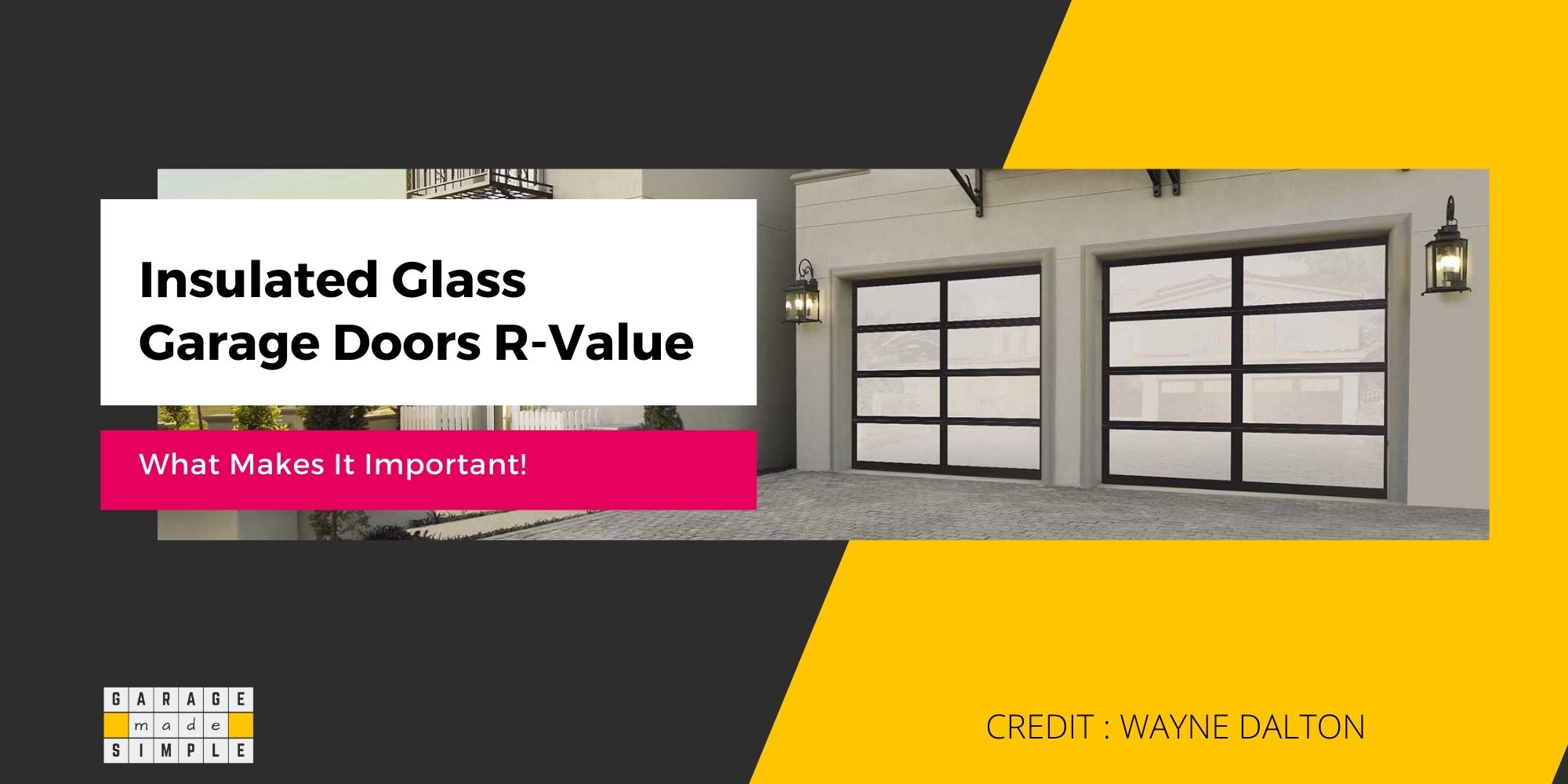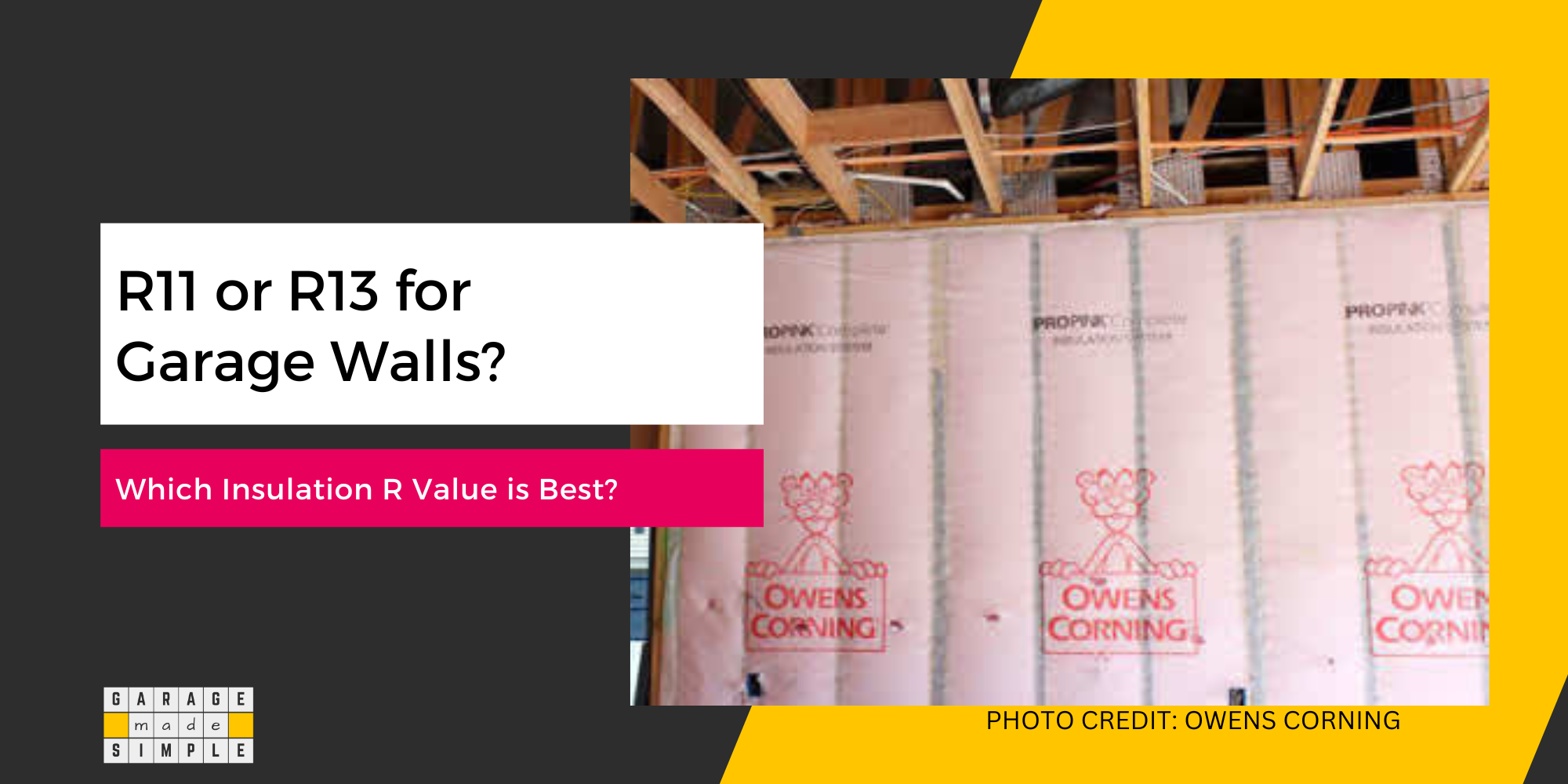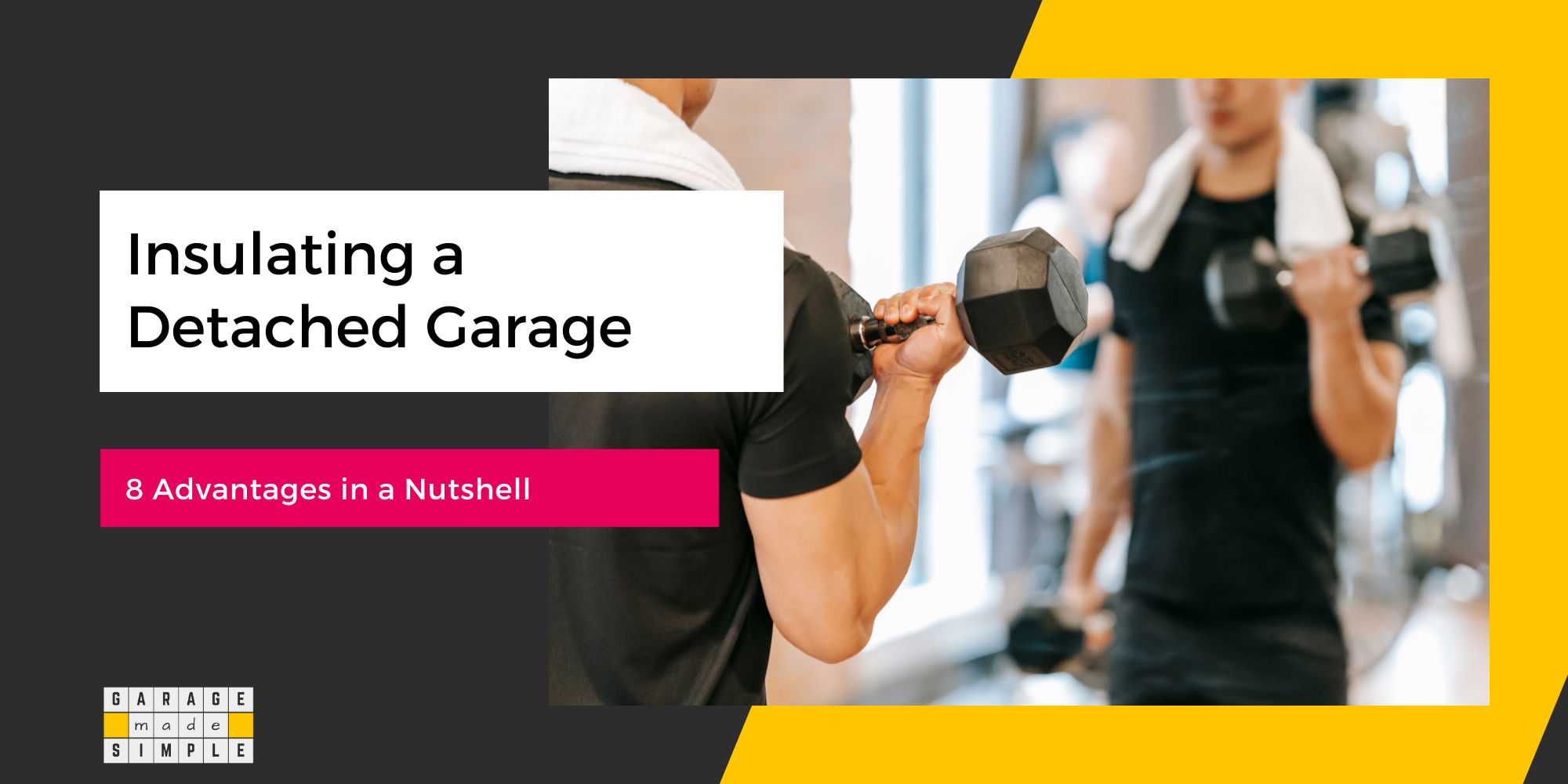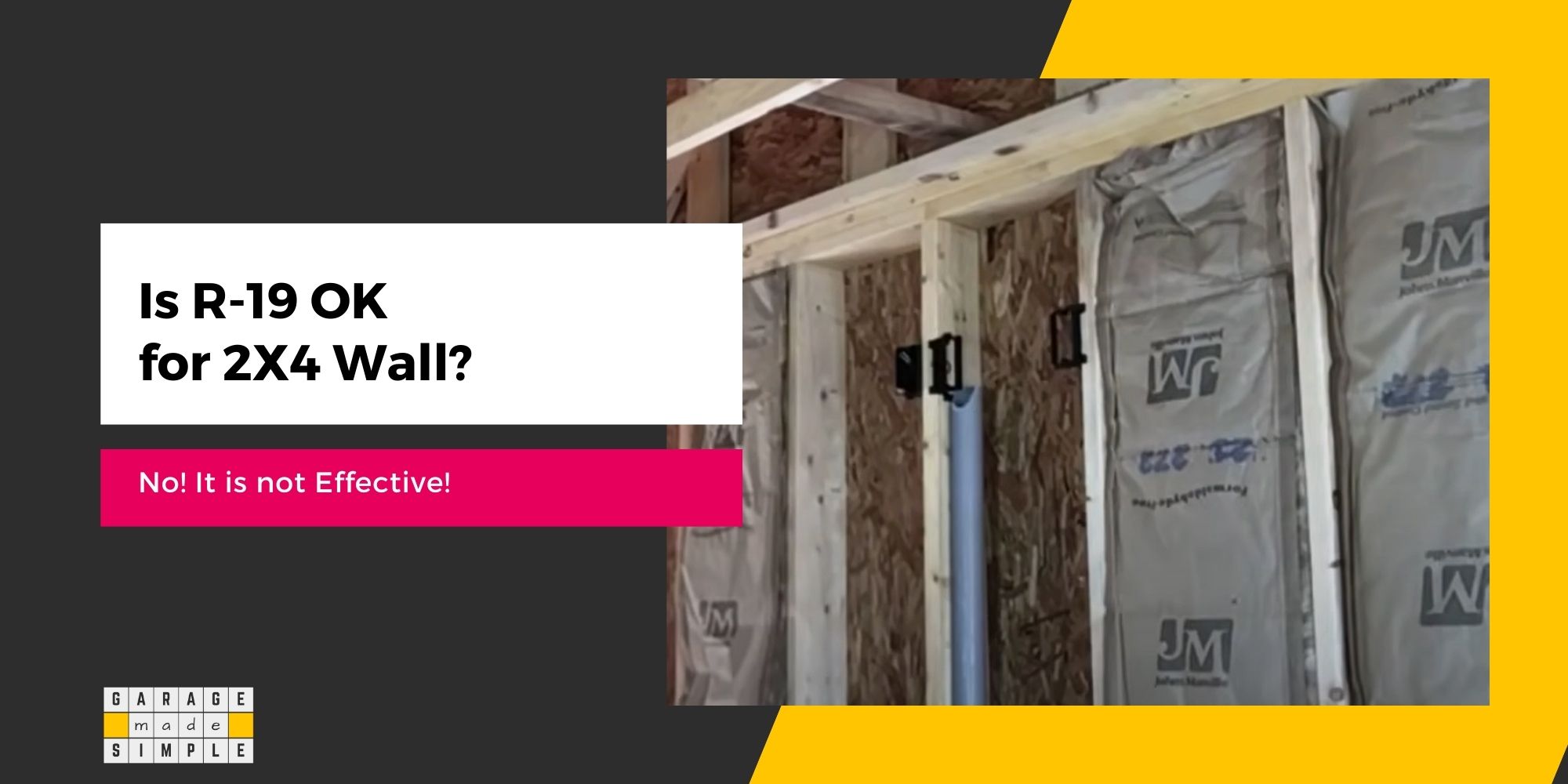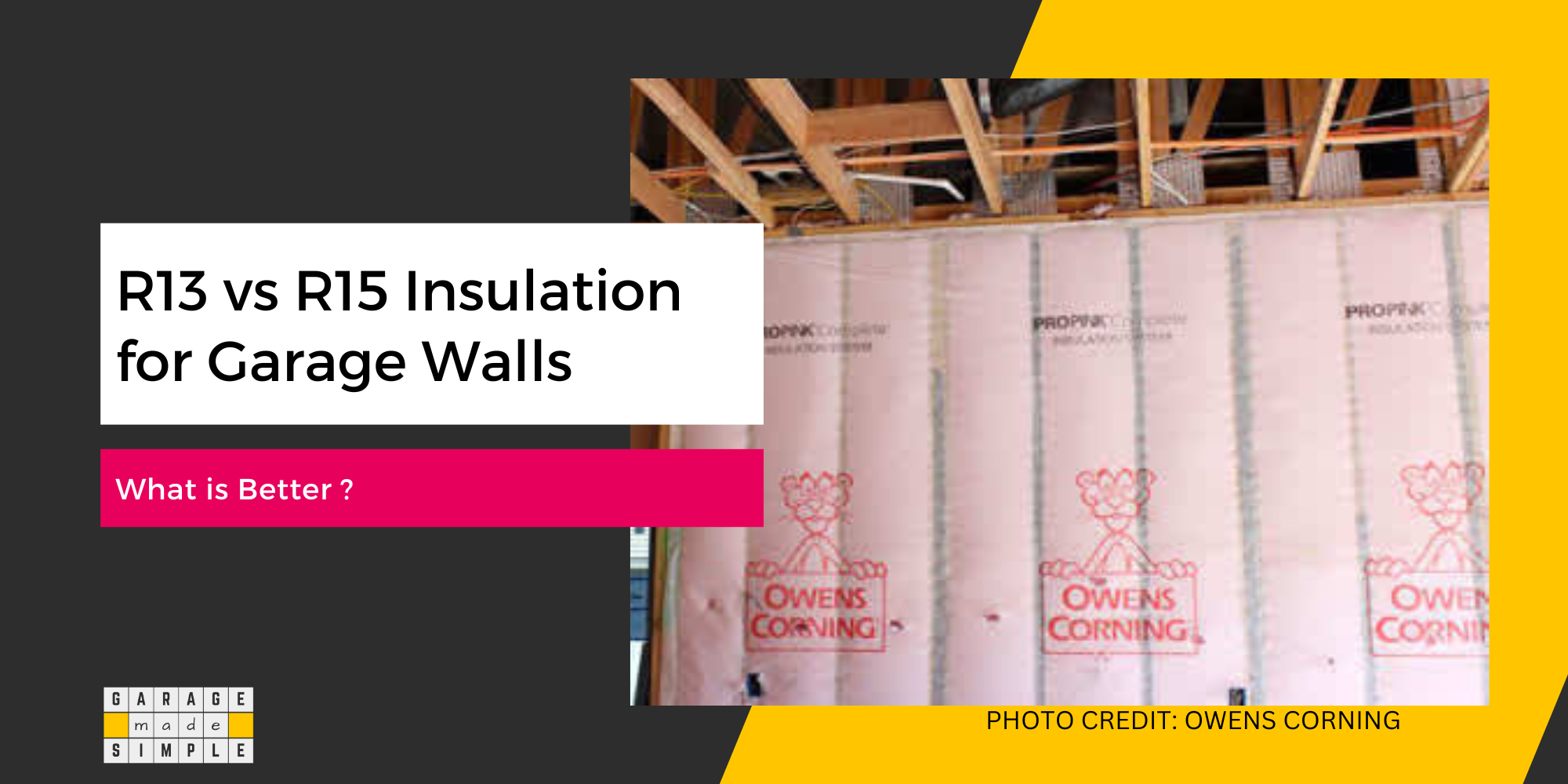Garage Wall Insulation: A Comprehensive Guide 2024!
As an Amazon Associate, I earn from qualifying purchases.
Garage wall insulation, along with door and ceiling insulation, is critical for maintaining this space at a comfortable temperature. Insulation plays an important role in reducing energy costs.
But that’s not all! When a garage is well insulated, the life of the parked cars and stored goods is enhanced. And, of course, it opens up the opportunity of using your garage as a multi-activity space. Wouldn’t you like a gym or a man cave in your garage?
In a nutshell, the benefits of Garage Wall Insulation are:
- Energy Efficiency: Reduces heating and cooling costs.
- Temperature Control: Keeps your garage warm in winter and cool in summer.
- Noise Reduction: Minimizes noise pollution from outside.
Quick Summary of Types of Garage Wall Insulation
| Type | Description | Pros | Cons |
|---|---|---|---|
| Fiberglass Batts | Composed of fine glass fibers woven together, pre-cut panels for easy fit. | Inexpensive, easy to install, widely available. | Vulnerable to moisture, can cause skin irritation. |
| Rigid Foam Insulation | Made from polystyrene, polyisocyanurate, or polyurethane, dense boards. | High R-value, moisture-resistant, good for thin spaces. | More expensive, requires precise cutting. |
| Spray Foam Insulation | Made from polyurethane, expands upon application to fill gaps. | Excellent coverage, seals gaps, high R-value. | Requires professional installation, expensive. |
| Cellulose Insulation | Made from recycled paper products, blown into wall cavities. | Environmentally friendly, good for soundproofing. | Can settle over time, requires professional installation. |
| Reflective Insulation | Reflective material bonded to a substrate, reflects radiant heat. | Effective in hot climates, easy to install. | Less effective in cold climates, can be more expensive. |
There are five types of garage wall insulation, each with its advantages and disadvantages. They include fiberglass batts, rigid foam, spray foam, reflective insulation, and cellulose insulation.
Each type offers different levels of thermal resistance, moisture control, and ease of installation. I will explain the composition, features, properties, pros & cons, and the best brand for each type.
1. Fiberglass Batts
Description and Composition
Fiberglass batts are composed of fine glass fibers woven together to form a dense, insulating material.
These batts come in pre-cut panels, making them easy to fit between standard wall studs. They are designed to provide effective thermal insulation by trapping air within the fibers, reducing heat transfer.
Pros
- Inexpensive: Fiberglass batts are one of the most cost-effective insulation options available, making them a popular choice for budget-conscious homeowners.
- Easy to Install: These batts can be installed by DIY enthusiasts with basic tools, such as a utility knife and a staple gun. The pre-cut panels simplify the installation process.
- Widely Available: Fiberglass batts are readily available at most home improvement stores, making them easy to source for any project.
Cons
- Vulnerable to Moisture: Fiberglass batts can lose their insulating properties if they become wet. Moisture can cause the fibers to clump together, reducing their effectiveness.
- Skin Irritation: Handling fiberglass can cause skin irritation and itching. It is essential to wear protective gear, such as gloves, long sleeves, and a mask, to avoid contact with the fibers.
Recommended Product for Garage Wall Insulation
Owens Corning R-15 Faced 23 by 93 Fiberglass Batt Insulation
- Owens Corning Insulation. With a R-Value of R-15 the insulation will fit into any 2×4 construction board.
- Kraft Faced. This insulation has a moisture barrier that is used for exterior walls, floors, or attics.
- This insulation is perfect for 8-foot walls. Two bundles of 4 for a total of 8 bags for at total of 831.84 square footage.
2. Rigid Foam Insulation
Description and Composition
Rigid foam insulation is made from polystyrene, polyisocyanurate, or polyurethane. These boards are dense and provide excellent thermal resistance.
They are available in various thicknesses and can be easily cut to fit specific dimensions. While they are an excellent option for garage door panel insulation, they are not commonly used for garage wall insulation.
Pros
- High R-value: Has superior insulation performance, reducing heat transfer effectively.
- Moisture-Resistant: Resistant to water absorption, preventing mold and mildew growth.
- Good for Thin Spaces: Provides high insulation value without taking up much space. In addition to garage door insulation, they can be used under sub-floor material to make the garage a multi-function space, even in winter.
Cons
- More Expensive: Generally costs more than other insulation types. This is another reason it is not preferred for garage wall insulation.
- Requires Precise Cutting: Needs to be cut accurately to fit around obstacles and ensure a tight seal, which can be time-consuming and may require specialized tools.
Recommended Product for Covering Small Spaces (eg: Garage Windows)
Owens Corning Pink Foam Insulation Board 1″ Thick
- Moisture-resistant XPS insulation foam board
- It does not crumble like Styrofoam
- Size: 15″ x 12″ x 1″, covers small areas
- Strong, stiff, ideal for crafts and insulation
- Easy to cut with a razor or hot knife
3. Spray Foam Insulation
Description and Composition
Spray foam insulation is made from polyurethane, which expands upon application. This expansion allows it to fill even the smallest gaps and crevices, creating an airtight seal.
It’s applied as a liquid and expands into a foam, making it ideal for irregularly shaped areas and hard-to-reach spots. It is an excellent option for your house but is probably an overkill as a garage wall insulation.
Pros
- Excellent Coverage: Provides comprehensive coverage, ensuring no gaps or voids.
- Seals Gaps: Effectively seals gaps and cracks, preventing air leakage and improving energy efficiency.
- High R-Value: Has superior thermal resistance compared to other insulation types, leading to better insulation performance and greater energy efficiency.
Cons
- Requires Professional Installation: Due to its application process, it requires professional installation. This further adds to the overall cost.
- Expensive: More costly compared to other insulation types. The initial investment can be higher, but the long-term energy savings can offset this cost.
Recommended Product for Filling & Insulating Joints in Garage Walls
Akfix Thermcoat Closed Cell Spray Foam Insulation Kit
- Easy, strong bonding with excellent adhesion
- Quick curing; full cure in 24 hours
- Innovative formula for heat and sound insulation
- Two nozzles for vertical and ceiling applications
- Suitable for various materials: wood, metal, etc.
- Ideal for building elements, attics, walls, and more
- Package includes foam, cleaner, gun, and safety gear
4. Cellulose Insulation
Description and Composition
Cellulose insulation is made from recycled paper products, primarily newsprint, treated with fire retardants. It is blown into wall cavities, providing a dense and effective thermal barrier.
This eco-friendly option is known for its ability to fill gaps and crevices, ensuring comprehensive coverage. It is a sustainable option for garage wall insulation that is gaining in popularity.
Cellulose insulation is a great option if you have a garage that is already drywalled but does not have any insulation in the stud cavities.
Pros
- Environmentally Friendly: Made from recycled materials, cellulose insulation is a sustainable choice that reduces landfill waste.
- Good for Soundproofing: Its dense composition helps to dampen sound, making it an excellent option for reducing noise transmission between rooms or from outside.
Cons
- Can Settle Over Time: Cellulose insulation may settle and compact over time, potentially reducing its effectiveness. Regular checks and maintenance are required to ensure optimal performance.
- Requires Professional Installation: Blown-in cellulose insulation typically requires specialized equipment and expertise, making professional installation necessary for best results.
Recommended Cellulose Insulation Products
Here are some products, that are well-regarded for their quality and performance in the cellulose insulation market.
GreenFiber Sanctuary Cellulose Blown-In Insulation
GreenFiber’s Sanctuary Blow-In Insulation is known for its high thermal performance and eco-friendly composition. Made from 85% recycled paper, it provides excellent coverage and is treated with fire retardants for added safety.
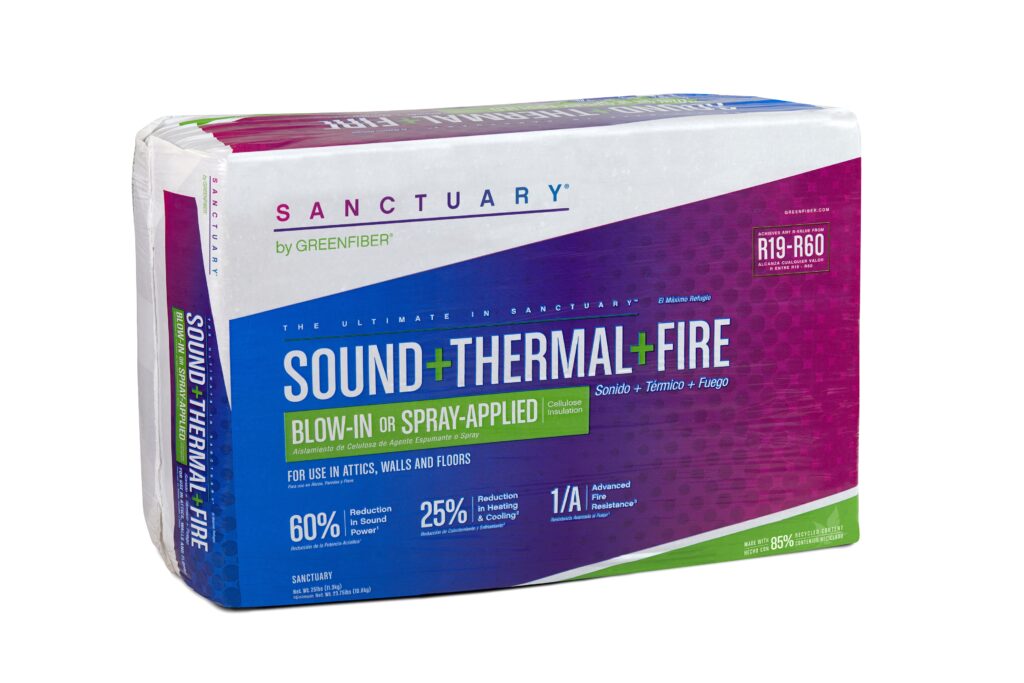
Sanctuary® Blow-In or
Spray-Applied Insulation
Used as attic insulation and installed in walls, floors, and ceilings, Sanctuary will significantly improve the comfort, safety, and well-being provided by any home. The first all-in-one fiber insulation that can be blown in or spray-applied, it’s suitable for all climates and conditions. Capable of reducing sound power by 60% and heating and cooling costs by 25%, it’s easily installed, environmentally responsible, and packaged to optimize coverage and ease of installation.
Applegate Loose-Fill Cellulose Insulation
Applegate offers premium loose-fill cellulose insulation that is ideal for both attics and walls. It is made from recycled paper and treated with borate for fire resistance and pest control.
Nu-Wool Premium Cellulose Insulation
Nu-Wool’s premium cellulose insulation is renowned for its high R-value and soundproofing capabilities. It is made from recycled paper and treated with all-natural borate, making it safe and sustainable.
5. Reflective Insulation
Description and Composition
Reflective insulation (aka radiant barriers) consists of a layer of reflective material, usually aluminum foil, bonded to a substrate like kraft paper or plastic film. It works by reflecting radiant heat away from the surface, making it particularly effective in hot climates.
Reflective insulation is often used in combination with other insulation materials to enhance overall thermal performance. It is rarely used for garage wall insulation but is often used for garage door or attic insulation.
Pros
- Effective in Hot Climates: Reflective insulation reduces heat gain by reflecting radiant heat. It can therefore be used for garage wall insulation in hot regions.
- Easy to Install: Lightweight and flexible, reflective insulation can be easily cut and installed by DIY enthusiasts. It can be stapled, glued, or taped to the garage walls, making the installation process straightforward.
Cons
- Less Effective in Cold Climates: Reflective insulation is not as effective at preventing heat loss in cold climates, as it primarily reflects radiant heat rather than providing thermal resistance.
- Can Be More Expensive: The cost of reflective insulation can be higher compared to other types of insulation, especially when considering the need for additional materials to achieve optimal thermal performance.
Recommended Product for Hot Regions
Reflectix ST16025 Staple Tab Insulation Roll, 16 in. x 25 ft
- The staple tab edge is manufactured by perforating the bubbles 3/4″ Down each edge of the product
- This creates a foldable tab that provides easier stapling for installation in wall, ceiling, and floor systems
- Inhibits or eliminates condensation
- Reflective insulation for use in a crawl space, attic, wall, metal buildings, and post and frame structures
- Fiber-free, environmentally safe, easy to install, and lightweight
- The metallic foil surface repels heat
- Air bubble lining resists the transfer of heat
Buyers’ Guide to Garage Wall Insulation
How to Determine the Right R-Value for Your Garage
The R-value measures the insulation’s ability to resist heat flow. For garages, an R-value between R-13 and R-19 is typically recommended.
Consider your climate: colder regions may require higher R-values. Assess the garage’s usage—workshops or living spaces need better insulation than storage areas.
For more information, check out my earlier blog post, R-Value For Garage Insulation: Comprehensive Guide.
Tips for Measuring and Calculating Insulation Needs
Accurate measurements are crucial. Measure the height and width of each wall to calculate the total square footage.
Factor in windows and doors, subtracting their area from the total. Use this data to determine the quantity of insulation material required. It is best to buy 5-10% more to account for errors and wastage.
Considerations for Moisture Control and Air Sealing
Moisture control is vital to prevent mold and mildew. Use vapor barriers on walls to block moisture. Seal gaps and cracks with caulk or spray foam to enhance energy efficiency and prevent drafts.
Proper air sealing also improves indoor air quality by reducing pollutants entering the garage.
DIY vs. Professional Installation: What to Expect
DIY insulation can save money but requires time and effort. Ensure you have the right tools and follow safety guidelines.
On the other hand, professional installation guarantees expertise and efficiency, often with warranties.
Assess your skills as a DIY handyman. Weigh the cost of professional installation against potential savings by going the DIY route.
Thank you very much for reading the post. I do hope you found it informative and useful.






